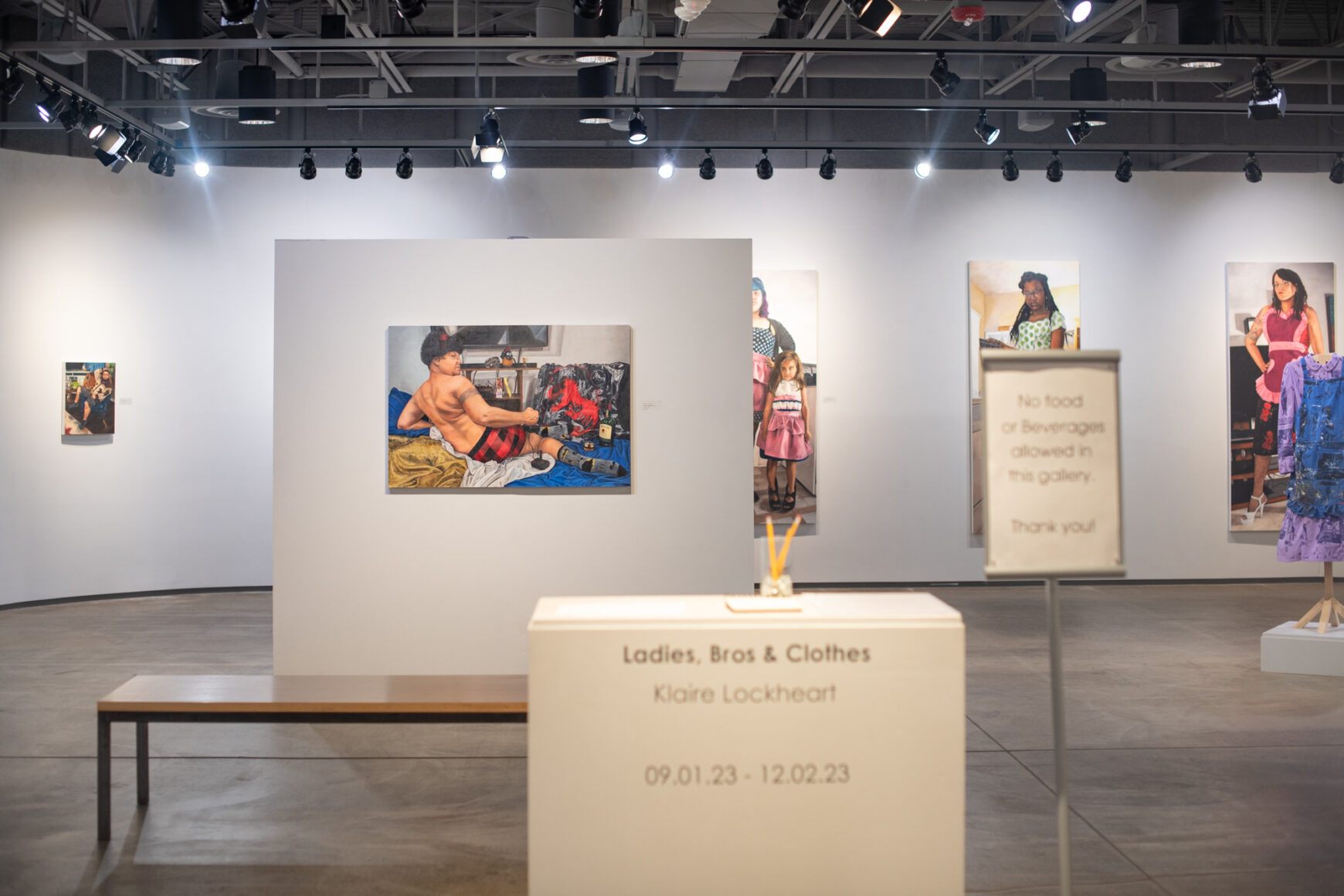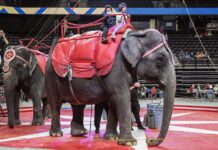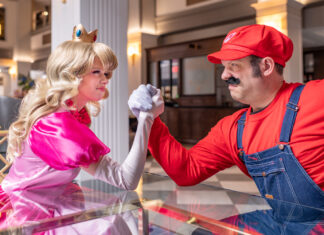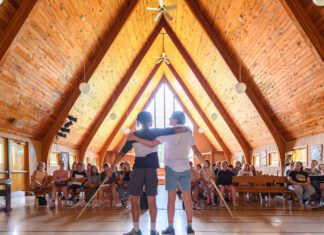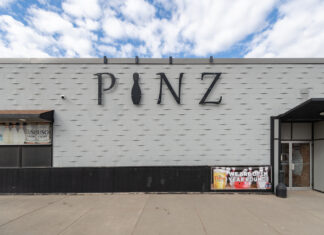“Arts South Dakota is a service organization, and its mission is to advance the arts for South Dakota and our visitors by advocating, educating, and connecting,” Jim Speirs executive director of Arts South Dakota told 605.
Promoting and supporting the arts throughout the state has been at the forefront of Arts South Dakota’s mission to aid in professional development, advocacy, lobbying, and promotional efforts.
“It’s what we like to call connecting people to the arts,” shared Speirs. “We let the people of South Dakota know about the dynamic and robust arts community we have in the state.”
One notable initiative that has contributed significantly to this mission is the Arts & Economic Prosperity Study 6 [AEP6].
This study, led nationally by Americans for the Arts, and locally by Arts South Dakota has played a crucial role in sharing the economic impact data on the non-profit arts in South Dakota.
“The arts have a long & special history in Rapid City. The numerous arts organizations in the community not only provide our citizens with ggrreat opportunitiesto showcase their talents, but also provide visitors of all ages with memorable moments & enrichining experiences.The recent findings from the Arts & Economic Prosperity study reveal the arts not only enhanccee our quality of life, but also have a signifiicant impact on our local economy. ”
-Mayor Jason Salamun, City of Rapid City



“It studies the number of employees, expenditures, tax revenue, and local tax revenue generated,” said Speirs.
Throughout the fiscal year 2022, the non- profit arts and culture sector generated $362,987,163 in economic activity throughout South Dakota.
“The other area of research was conducted through audience surveys,” Speirs stated. “For patrons attending arts events in their communities, volunteers would survey how far they traveled and what expenses aside from ticket prices were incurred.”
From that data, Arts South Dakota was able to determine the state-wide average attendee dollar amount spent per arts event, which was $35.79 a person.
Artistic Statistics
In South Dakota, the non-profit arts and cultural sector provided:
» 6,054 jobs
» 66,455,088 attendees to arts and cultural events



The next step was to identify how out of town visitors influence the amount they spend attending arts events. For non-locals, the average attendee dollar amount spent was $74.14.
Not only was the study able to conclude the average spent at the events, but it also recorded total attendance.
Speirs shares the volunteers identified the number of visitors who traveled from another county or up to 100 miles away.
“This study gives you a clear picture of the significance of tourism as it relates to art experiences and the significance of people traveling to experience arts in your community,” he added.
“The city of Sioux falls is taking more of an active role in the arts community & it’ll hopefully increase the opportunities to integrate arts in a community improvement project.
-Kellen Boice, Sioux Falls Arts Council
In addition to the statewide study, AEP6 focused on five city arts councils throughout South Dakota: Aberdeen, Brookings, Rapid City, Sioux Falls, and Yankton. Throughout those five arts councils, the study extrapolated total expenditures and total employment.
“For Sioux Falls specifically, we saw our numbers increase within job employment here; the arts employ 2,156 people,” said Kellen Boice, executive director of the Sioux Falls Arts Council.
In Sioux Falls the study found that the arts and culture nonprofits make an annual economic impact of $126,108,085.
As for Rapid City, Jacqui Dietrich, executive director of the Rapid City Arts Council shares that their sector supports 3,296 jobs and makes an annual economic impact of $204,105,202.
“The future of our communities depends on arts and culture as an economic driver, as a creative community supports our local employers in professional recruitment, attracts visitors, and encourages local spending,” said Dietrich.
With South Dakota hosting a strong, close-knit arts community, art is gaining more attention as a driving force of tourism.
“We’ve known it since the 1930s. Tourism started in South Dakota from a large sculpture in the Black Hills,” shared Speirs. “It’s been a foundational element of tourism since day one, but now we’re starting to see a greater awareness and appreciation for the role the arts play in attracting visitors.”

Other Study Partners Total Expenditures
Aberdeen: $4,336,299
Brookings: $7,570,781
Yankton: $2,008,306



The communities throughout the state have individual nonprofit art organizations and events that drive visitors to experience artistic and cultural opportunities time and time again.
“Within Rapid City, at least 90 art organizations are involved in those presentations,” said Dietrich.
Events such as the Black Hills Pow Wow draw audiences from around the country, while the semi-professional symphony employs 90 musicians. Local businesses like Racing Magpie, The Journey Museum & Learning Center, and the Suzie Cappa Art Center serve as cultural and artistic amenities, as live music performed by local talent is a popular source of entertainment.
“The Dahl Arts Center is rooted in our culture of resilience and is a premier venue for regional artists, with dozens of exhibitions and performances catering to locals and visitors year-round,” said Dietrich.
In Sioux Falls, the Levitt at the Falls aims to build connections through music by gathering the diverse community and fostering social interactions among people of all ages and backgrounds. The Washington Pavilion serves to deliver memorable experiences that entertain, educate, and enrich through live performances, art galleries, hands-on science exhibits, and creative educational opportunities.
“The Arc of Dreams was an initiative from the Sculpture Walk Sioux Falls,” shared Boice. “It’s for everyone and it’s a unique piece of art that is becoming a staple in our community.”
“Arts South Dakota provides critical resources for telling the story about the impact the arts make on our communities. ”
-Jacqui Dietrich, Rapid City Arts Council

The state of South Dakota has always valued cultural attractions and creative enterprises to drive economic growth.
AEP6 analyzes the impact of the arts non-profit industry on the state’s economy and illustrates its importance to citizens.
“Art is so personal and is truly what makes our communities the way they are,” expressed Speirs. “It’s the arts that create character, that’s what defines the uniqueness of our communities. The impact is beyond words.”
The audience survey revealed the overwhelming appreciation of arts and cultural opportunities in South Dakota.
It was identified that 91% of respondents feel pride in their community or neighborhood’s arts offerings, while 88% would feel a sense of loss if cultural opportunities were not available.
In addition, 87% of respondents said arts attendance contributes to the preservation of creative activities and venues.
“Our goal at Arts South Dakota is to connect and continue to have every South Dakotan aware of the role that art plays in their lives and communities,” said Speirs.


